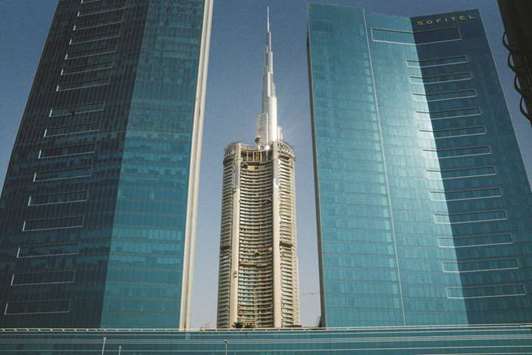Dubai real estate prices could decline by 10 to 15% over the next two years, hit by new supply, geopolitical risks and the introduction of value added-tax in the United Arab Emirates, S&P Global Ratings’ analysts said yesterday.
The grim prediction came after Dubai residential prices fell by 5 to 10% in 2017, and the weak property market has also begun to hurt earnings of the emirate’s top property developers.
“We believe this correction will continue at least for this year and next, before prices stabilise in 2020 at the earliest,” said Sapna Jagtiani, S&P’s credit analyst for corporate and real estate ratings.
Rents in both residential and retail markets will also remain under pressure, and hotels will be forced to accept lower average daily room rates to maintain occupancy levels, S&P said.
Property prices are down 16-19% from their peaks of over three years ago, National Bank of Kuwait said in a report this month.
Jagtiani told reporters that Dubai’s Expo 2020 could benefit the property market due to the potential increase in economic activity on the back of the expected arrival of 25mn visitors and new residents.
However, she cautioned the property sector ran the risk of “overbuild,” the effects of which would be felt beyond 2020. Property consultancy Jones Lang LaSalle’s 2017 report suggested the planned residential supply in Dubai would grow by 9% in 2018 and 7% in 2019.
Emaar Properties reported a 16% slide in fourth-quarter net profit on February 14, as costs weighted on Dubai’s largest listed developer.
It followed results from fellow developer DAMAC Properties that showed a nearly 47% plunge in net profit for the quarter.
Jagtiani said geopolitical risks would weigh on sentiment.
Jagtiani said the real estate downturn would not be as severe as that experienced in 2009 due to prudence among lenders and tighter regulation of the property market.
House prices in Dubai in 2009-2010 plunged more than 50% from their peaks, pushing Dubai close to a debt default.

A tower under construction (centre) is seen beyond the Sofitel hotel and the Burj Khalifa skyscraper in Dubai. Real estate prices in Dubai could decline by 10% to 15% over the next two years, hit by new supply, geopolitical risks and the introduction of value added-tax in the United Arab Emirates, S&P Global Ratings’ analysts said yesterday.
